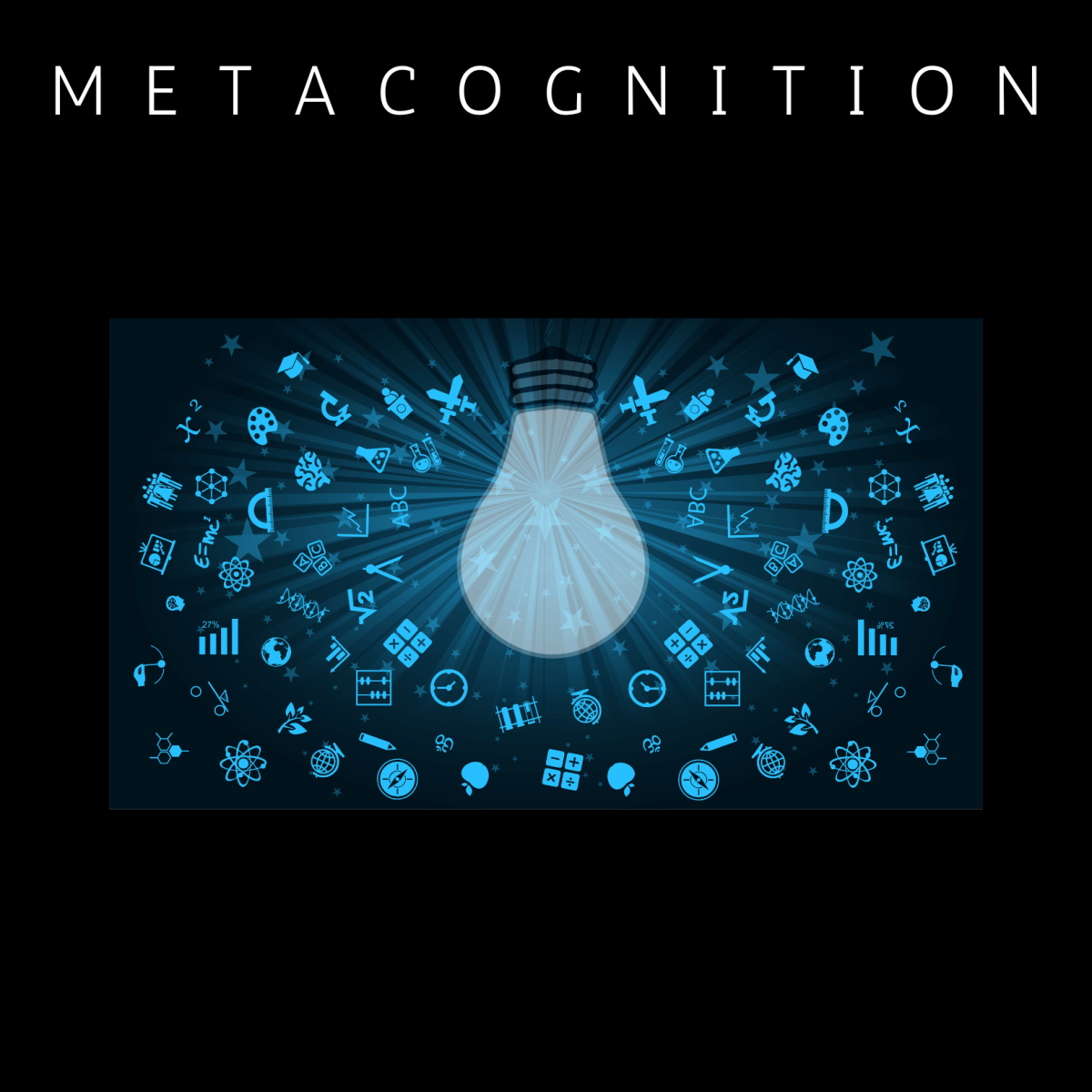By: Natasha Kenny and Patti Dyjur
Following teaching and learning disruptions during the pandemic, we heard a lot about the struggles students were facing as they returned to the classroom. For example, Nappierala et al. (2022) summarized that undergraduate students faced a “skills gap” in time management, organization, independent learning, engagement and communication. Students were struggling less about the content of what they were learning, and more about the strategies they were using to support how they learned.
Herein lies what may be the most powerful strategy to support student learning and success in university courses – metacognition.
What is metacognition?
Metacognition is our awareness of and ability to reflect upon, control and improve how we learn (Stanton et al., 2021; Rivas et al., 2022). It involves: 1) learning more about how we think and learn; 2) identifying and developing strategies to regulate and improve how we learn; and, 3) planning to and actively transferring these new and improved learning strategies into other areas of our lives (Stanton et al., 2021; Fleur et al., 2021; Rivas et al., 2022). Metacognition not only helps to improve students’ learning and performance, but it helps them become better learners in the long run. What’s even better? Metacognition is a skill that can be learned, practiced, and strengthened over time (ideally over a lifetime!).
Teaching and learning interventions that provide opportunities for students to engage in self-reflection on their learning processes and behaviours, plan what strategies work best for them, and select new learning strategies to support their success into the future may best benefit them and their academic achievement (Fleur et al., 2021). Teaching and learning activities that support metacognition often don’t take much time, but they do involve on-going effort and practice.
Teaching and learning strategies to support metacognition
Here are a few of our favorite metacognitive activities.
Exam Debrief
Have students explore the following reflective prompts and dialogue with a thought partner after an exam (Tanner, 2012):
- What strategies did I use, and how much time did I study for this exam?
- What questions did I answer correctly? How do these demonstrate my strengths? What questions did I not answer correctly?
- How do my answers compare with the correct solutions? What confusions do I still need to clarify? What course material do I need to review and practice?
- What exam preparation strategies worked well that I should remember to do next time? What exam preparation strategies did not work well that I should change next time?
Diagnostic Learning Logs
Ask students to keep a log throughout the course and make brief notes on each class. You may want to save five minutes at the end of each class for students to answer the following questions:
- What concepts that were introduced in today’s session are clear to me?
- What concepts do I need to better understand?
- What are my next steps to promote my success in the course?
Occasionally, you might want to have a class discussion to identify tricky concepts. You can also collaboratively generate strategies to better understand them, such as reading supplemental resources and reaching out to a teaching assistant (University of Tennessee Chattanooga, 2016).
Modeling
Use metacognitive techniques in your teaching to model them to students. These strategies can get you started:
- Think aloud: Demonstrate specific steps or techniques while describing them explicitly. When implementing a strategy, describe what you have selected and why, what the benefits are as well as potential drawbacks. Learners can ask questions to further clarify any confusion (Ellis et al., 2014).
- Diagramming: Present information in graphs, charts, timelines, and other representations as appropriate. For topics that are not easily represented in graphical form, create a mind map while describing the connections. As a follow up, ask students to create their own mind map on another topic and discuss it (including what they’ve learned through the process) with an elbow partner once they have completed it (Ellis et al., 2014).
A call to action
Our call to action for all university instructors is to intentionally integrate one additional metacognitive activity into your course. It may be through a formal course assignment or as part of an informal course activity. Trust that the benefits for student learning will likely ripple far beyond your course! Our stretch goal – take the time to stop and reflect with a colleague: What did you notice about this activity? What worked? What didn’t go as planned? What would you change going forward? Get meta about going meta in the classroom!
Curious about other activities and ideas? Tanner (2012) shares many additional metacognitive activities and prompts.
Have additional metacognitive activities and ideas that you’d like to share? We’d love to hear more about them in the comments section below!
References
Ellis, A. K., Denton, D. W., & Bond, J. B. (2014). An analysis of research on metacognitive teaching strategies. Procedia – Social and Behavioral Sciences, 5th World Conference on Educational Sciences, 116, 4015-4024.
Fleur, D.S., Bredeweg, B. & van den Bos, W. Metacognition: ideas and insights from neuro- and educational sciences. npj Sci. Learn. 6, 13 (2021). https://doi.org/10.1038/s41539-021-00089-5
Napierala, J., Pilla, N., Pichette, J., & Colyar, J. (2022) Ontario Learning During the COVID-19 Pandemic: Experiences of Ontario First-year Postsecondary Students in 2020–21. Toronto: Higher Education Quality Council of Ontario. https://heqco.ca/pub/ontario-learning-during-the-covid-19-pandemic-experiences-of-ontario-first-year-postsecondary-students-in-2020-21/
Rivas, S. F., Saiz, C., & Ossa, C. (2022). Metacognitive strategies and development of critical thinking in higher education. Frontiers in Psychology, 13, 913219.
Stanton, J. D., Sebesta, A. J., & Dunlosky, J. (2021). Fostering metacognition to support student learning and performance. CBE—Life Sciences Education, 20(2), fe3.
Tanner, K. D. (2012). Promoting student metacognition. CBE—Life Sciences Education, 11(2), 113-120.
University of Tennessee Chattanooga. (2016). Classroom assessment strategies. Retrieved from http://www.utc.edu/walker-center-teaching-learning/teaching-resources/classroom-assessment-strategies.php#self-awareness


One thought on “Metacognition – a strategy for success in university teaching & learning”